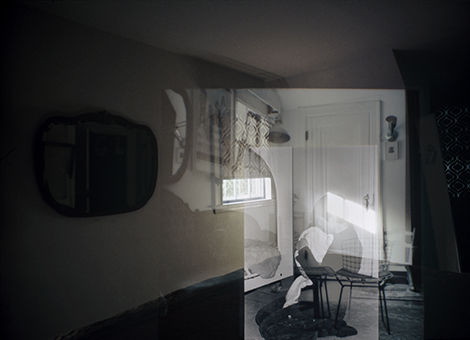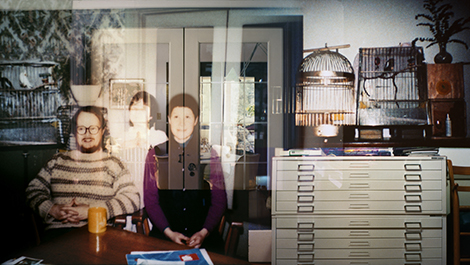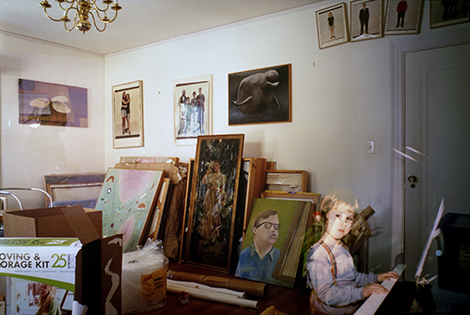Your cart is currently empty!
Augusta Wood

With 21 new photographs in her second solo show at Angles Gallery, Augusta Wood resumes where she left off in her 2010 body of work, “I have only what I remember,” by delving deeply into personal history. Wood constructs her photographs from multiple images selected carefully from her family archive. She superimposes the past onto the present, projecting simultaneously sometimes up to four and five photographic slides, shot years apart, onto the same pictorial space, and then photographing the resulting composite image.
As viewers of these images, we are voyeurs, looking into a private world. Not entirely invited in, we begin to impose our own meaning on these elaborately synthetic photographs, constructing fictions out of bits and pieces of second hand experience.

In Wood’s quest to reconstruct the past, one can feel time piling up and memories bleeding onto each other. In her landmark essay, “On Photography,” Susan Sontag wrote, “Photographs really are experience captured, and the camera is the ideal arm of consciousness in its acquisitive mood.” Wood’s compositions—as accretions of experience—are themselves fragile mental constructs whose elements are easily conflated and reorganized, with the photographs morphing and diverging into multiple histories. The ghostly images reveal traces of human presence from years long gone by, recalling Roland Barthes’ assertion that “a photograph is a witness, but a witness of something that is no more.”

The exhibition—“Whether it happened or not”—reflects the artist’s ambiguity over the reliability of her memories. Are her memories fabricated from her family’s photographic record or independent of it? By overlaying multiple pictures of the same domestic space, her work amounts to an investigation of her past, a quizzical look at biography and an interrogation of time. She asks, what is real, what is imagined, and what is remembered solely through the furnishing of visual evidence.

As a viewer, one can feel estranged from what is in the picture frame, for the content and context lacks the familiarity associated with looking at one’s own family photos. Susan Front Hall (1979, 2012, 2012) (2013), for example, provides a richly layered view into what is presumably the entrance hall of Wood’s family home. A toddler held by a woman, who is probably her relation, peers directly into the camera’s lens. Her eyes are intense and inquisitive and her prominent lower lip glistens with saliva. She is lovely, but who is she? Very likely, the artist photographed by a family member in 1979. Her searching gaze, beguiling as it is, is not meant for us, but for the photographer—then, and now.
More than the imprint of a specific image or set of images, Wood’s collection of constructed photographs leaves a residue of impressions, a set of fleeting and ephemeral encounters, a sense of longing, and the inexorable slipping away of the past. Desire—both hers and ours—to hang on to the fading fragments of memory coalesces within the filigree images, and her overlapping, semitransparent frames.